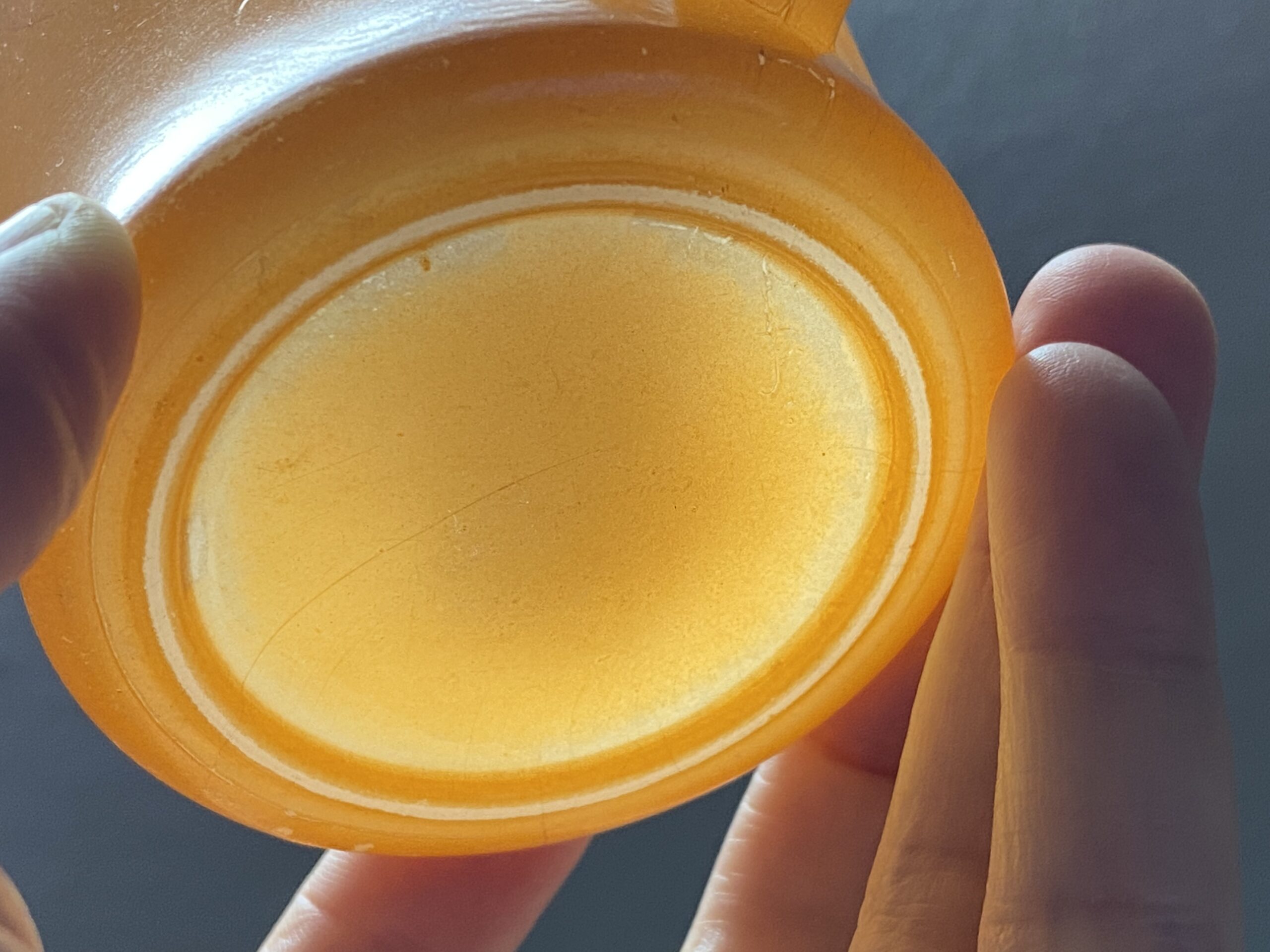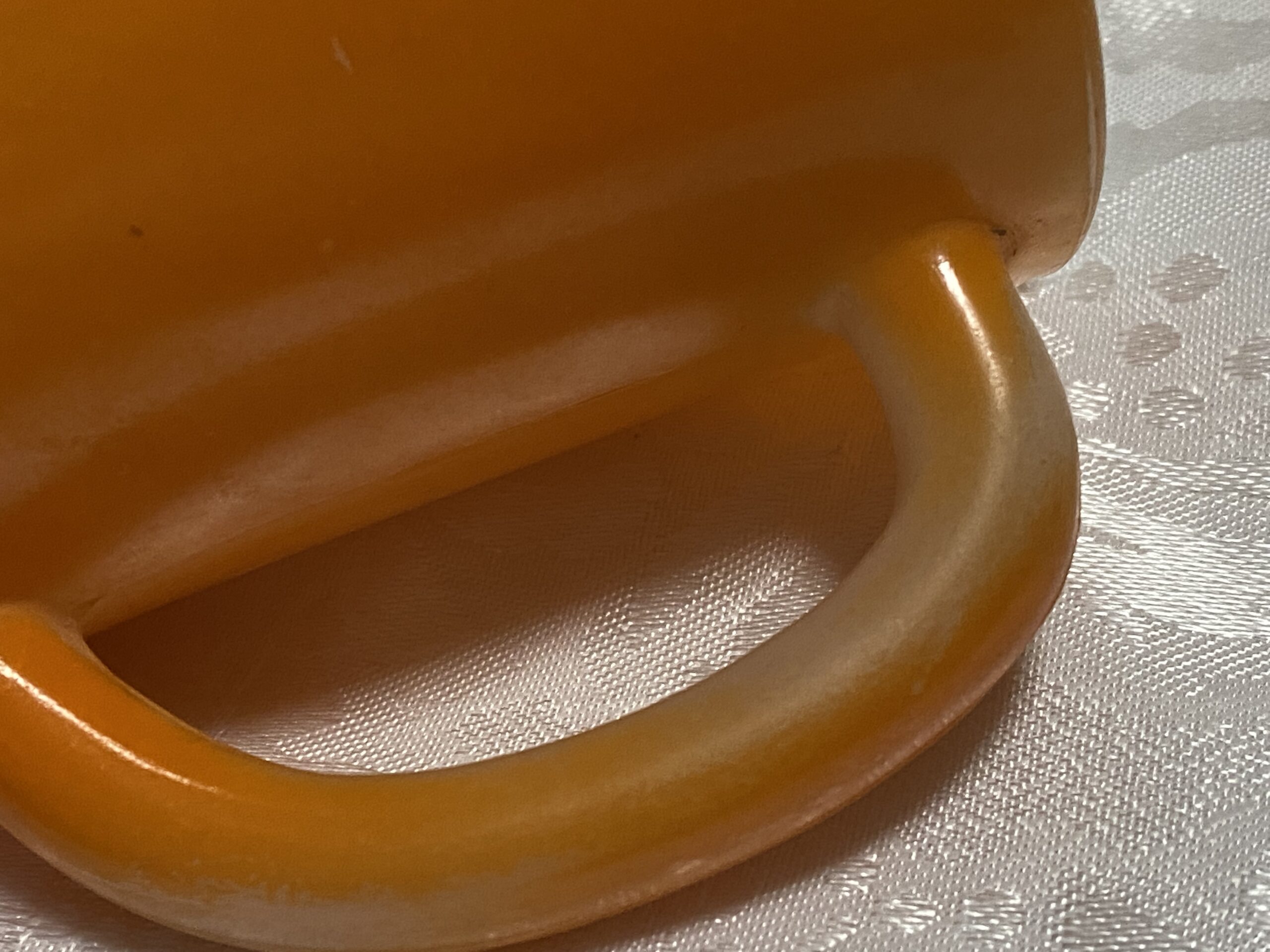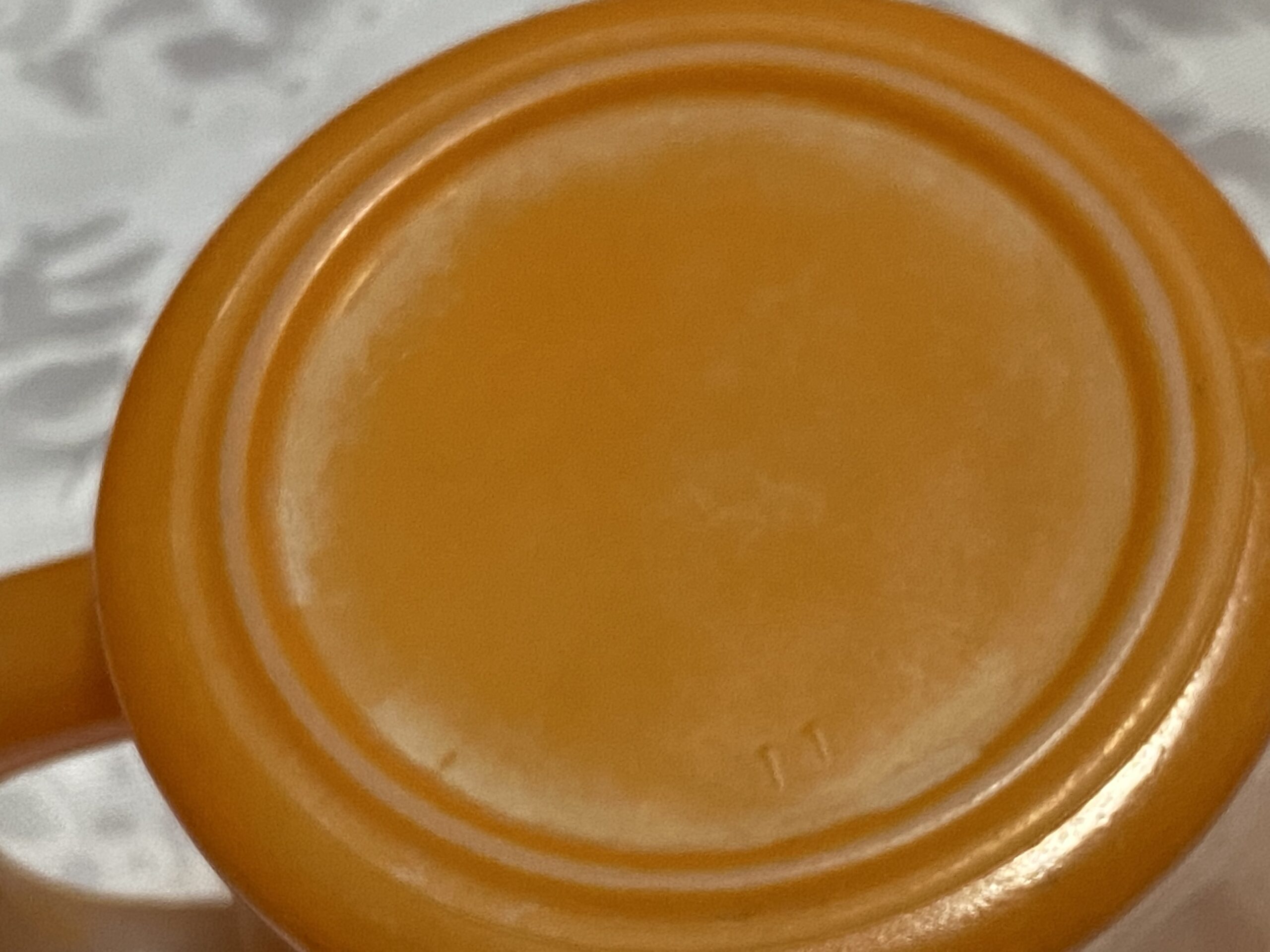Vintage Orange Hazel Atlas Milk Glass Mug: 24,100 ppm Lead + 1,546 ppm Cadmium + 39 ppm Mercury. Cadmium causes cancer. Lead is toxic at 90 ppm & up.
For those new to this website:
Tamara Rubin is a multiple-federal-award-winning independent advocate for childhood Lead poisoning prevention and consumer goods safety, and a documentary filmmaker. She is also a mother of Lead-poisoned children (two of her sons were acutely Lead-poisoned in 2005). Since 2009, Tamara has been using XRF technology (a scientific method used by the U.S. Consumer Product Safety Commission) to test consumer goods for toxicants (specifically heavy metals — including Lead, Cadmium, Mercury, Antimony, and Arsenic). Tamara’s work was featured in Consumer Reports Magazine in February 2023 (March 2023 print edition).
This is an ad-free article!
XRF Test Results For The Yellow / Orange Painted Milk Glass Mug Pictured
- By modern standards (implemented in 2008) when a newly manufactured item tests positive for more than 90 parts per million (ppm) Lead (in the paint, glaze or coating of the item) that item is considered illegal (and unsafe) for use by children (but only if the item is manufactured and marketed with the express intention that it be used by children.)
- Dishware is not covered by this 2008 regulation (the United States Consumer Product Safety Improvement Act of 2008) as (inexplicably) dishware is not a category of items that U.S. regulatory agencies consider to be “intended for use by children”.
- As a result, both vintage and modern/new dishware (including mugs) can LEGALLY have Lead (and other toxic heavy metals – including Cadmium and Mercury) in the paint, glaze or coating at levels that may cause harm and are considered unsafe for children.
- There is no federal law limiting total lead content in food-use items intended for use by adults even though all federal agencies agree that there is no safe level of Lead exposure for humans (regardless of age.)
- The only applicable law is the FDA’s leach testing standard (for food use items) and that regulatory standard does not cover the concern for Lead paint that may be found on the outside of a vessel (even though recent scientific studies have proven the potential health impacts and risks associated with lead paint on the outside of these food-use items).
Reading #1.) On the orange of the mug
60-second reading
- Lead (Pb): 24,100 +/- 200 ppm
- Cadmium (Cd): 1,546 +/- 22 ppm
- Mercury (Hg): 39 +/- 10 ppm
- Bromine (Br): non-detect
- Chromum (Cr): non-detect
- Iron (Fe): 87 +/- 36 ppm
- Zinc (Zn): 452 +/- 14 ppm
- Selenium (Se): 266 +/- 12 ppm
- Titanium (Ti): 6,745 +/- 437 ppm
- Zirconium (Zr): 1,000 +/- 13 ppm
- Indium (In): 10 +/- 3 ppm
- Platinum (Pt): 370 +/- 34 ppm
- No other metals detected in Consumer Goods mode.
Reading #2.) On the white of the milk glass
60-second reading
- Lead (Pb): 48 +/- 5 ppm
- Cadmium (Cd): 56 +/- 3 ppm
- Mercury (Hg): non-detect
- Bromine (Br): 11 +/- 1 ppm
- Chromum (Cr): non-detect
- Iron (Fe): 169 +/- 41 ppm
- Zinc (Zn): 711 +/- 20 ppm
- Zirconium (Zr): 1086 +/- 14 ppm
- Indium (In): 7 +/- 3 ppm
- Tin (Sn): 6 +/- 3 ppm
- Antimony (Sb): 10 +/- 5 ppm
- No other metals detected in Consumer Goods mode.
Some additional reading that may be of interest:
- Why is it a problem if the Lead paint is “only on the outside”? Click here for an explanation.
- More examples of milk glass we have tested and reported on.
- Information about the Instrumentation we use to test for metals.
- More mugs we have tested and reported on.
- More “Made in USA” items we have tested and reported on.
- How to choose a safer mug (with examples of specific choices for safer mugs.)
- An overview article about the concern for Lead in pottery & dishware (generally).
- The menu for this website (with other categories of test results and articles to explore).
- A link to our documentary feature film (with music donated by The Who & Tom Waits)
~ End ~
Never Miss an Important Article Again!
Join our Email List


















Hi, do you know if the all white Hazel Atlas or anchor hocking milk glass (non colored or painted/fired on) is safe for use?
I haven’t tested enough of these from this brand to draw a conclusion – Jenn. Milk glass can be low lead or high lead (without any paint) so it is not personally a risk I would take for my family.
T
Are these types of items toxic through touch?
Also are the clear Hazel-Atlas pressed glass items toxic?
YES – they are not safe to touch.
I haven’t tested any clear glass from this brand.
Here’s how to send something in for testing:
https://tamararubin.com/2019/08/tamara-can-i-send-you-one-of-my-dishes-to-test-for-lead/
T
I have a milk glass hazel atlas tea set that is valuable to me,but I have never used it. is there any safe way to keep it or should I get rid of it. along with that what is a safe way to get rid of it because I am assuming I shouldn’t donate it but it is such a beautiful tea set I don’t want to throw it away.
Is it painted? Or is it plain white milk glass with no additional exterior or interior painted decorations? The concern is primarily if it is painted.
Tamara
yes, they are painted blue and pink on the outside (you can Google ‘1950’s Hazel Atlas Crinoline’ for a picture)
I have recently received a collection of Hazel Atlas Moroccan Amethyst purple glass dishes and cups.
We did shine UV light on it and found a faint muddy yellow glow.
Have you tested this purple glassware?
Can you tell me if you have found any high unsafe levels for anything? Or is it even safe to touch or use? Thanks.